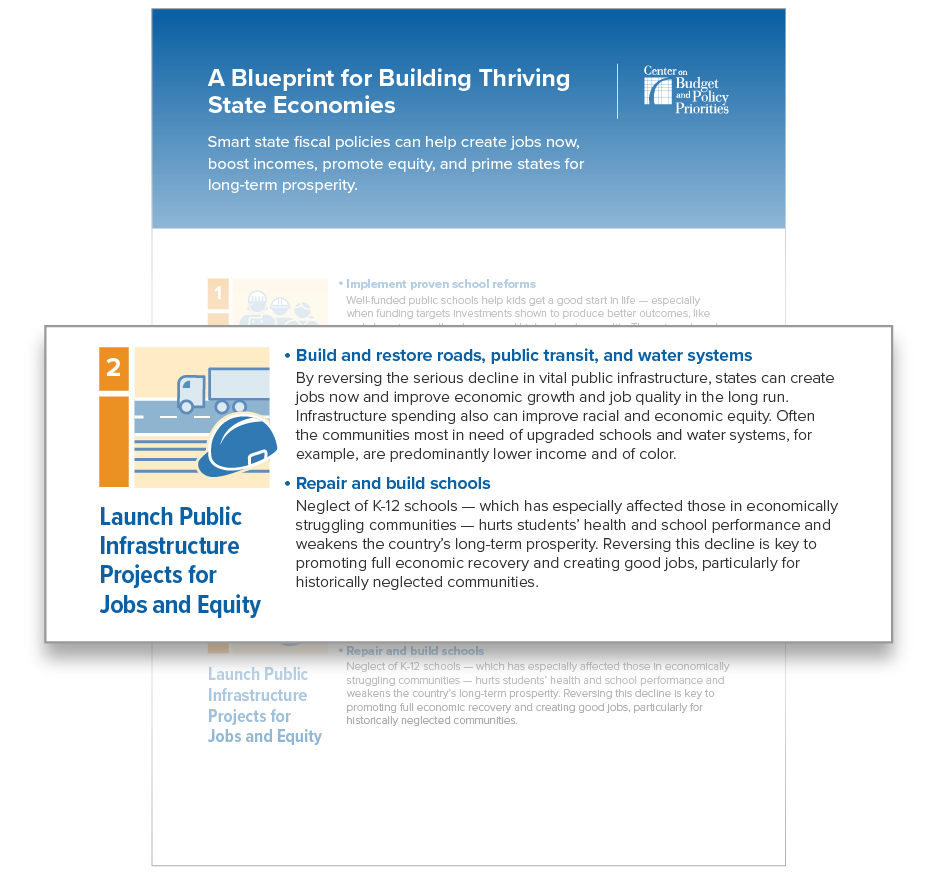BEYOND THE NUMBERS
Everyone in America — regardless of where they were born, the state where they live, the color of their skin, or the size of their bank account — should have the opportunity to achieve their goals. But ensuring broad opportunity and prosperity won’t happen by chance. Smart state fiscal policies play a critical role.
Our four-point fiscal policy blueprint maps out how state lawmakers can build thriving state economies. Our blueprint prioritizes public investments to maximize people’s ability to succeed and rejects a tax-cutting agenda that has long dominated in many states. Good schools in every community, family economic supports, health coverage, and high-quality infrastructure — not tax cuts for the highest-income households — help every person reach their potential, support job-creating entrepreneurs, and enable state communities and economies to thrive.
To build thriving communities and economies, state lawmakers can:
- Invest in education and health to unleash residents’ potential and boost productivity. For example, states can target education dollars to early learning, smaller class sizes, and improved teacher quality to improve education outcomes, especially for students of color and low-income students.
- Launch public infrastructure projects to create jobs, spur growth, and promote equity. Building and repairing roads, bridges, public transit, school buildings, and other physical assets creates jobs and can also promote equity when targeted to communities with the greatest need.
- Boost household incomes for shared prosperity. States can help families make ends meet and improve children’s life chances with state earned income tax credits and higher minimum wages. They also can remove barriers to work by providing child care and transportation assistance, and by reducing incarceration and taking an inclusive approach to undocumented immigrants.
- Clean up the tax code. Scrapping ineffective, special interest tax breaks, incentives, and loopholes and asking the wealthiest to pay their share would free up new dollars for education, income supports, and infrastructure projects.
The tax cuts that state lawmakers have pursued, and that federal lawmakers are now advocating, have typically failed to produce economic benefits for the broad majority. Instead, much of the economic gains of recent decades has accrued to a small number of wealthy Americans while progress for people of color, women, and those with lower incomes has plateaued at best. Such state tax cuts have squandered resources that states otherwise could have invested in shared opportunity. The best plan for building strong state economies is one that unlocks human potential, improves quality of life, and sets up entrepreneurs for success.

